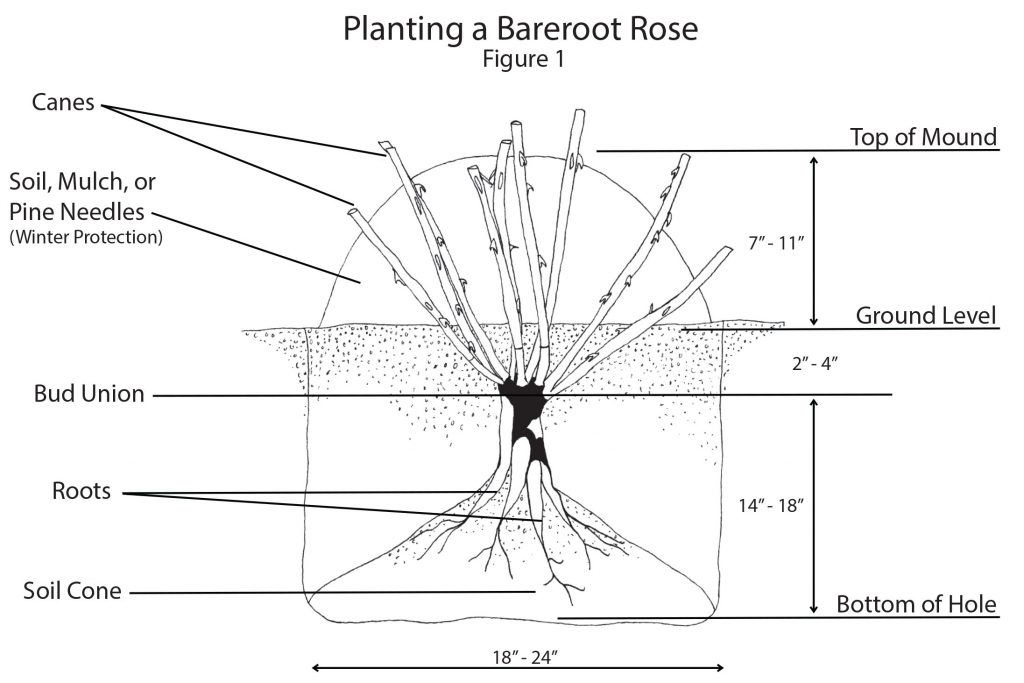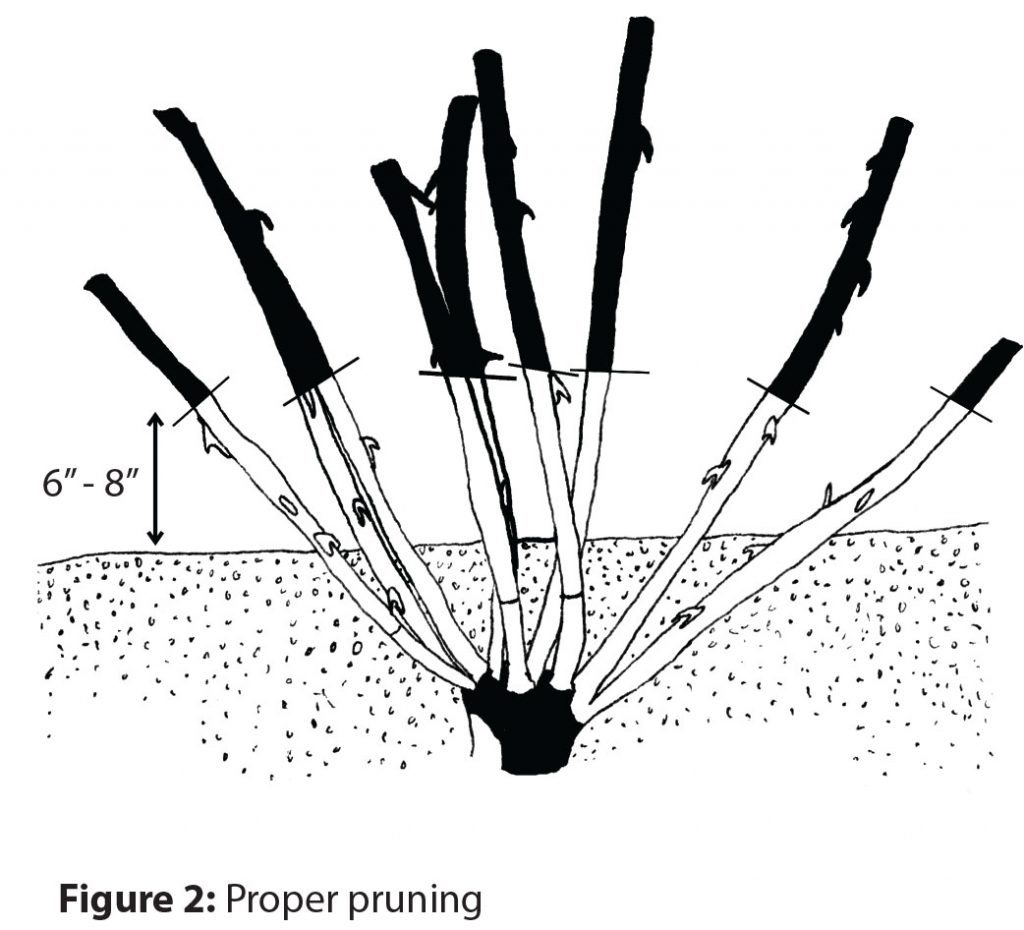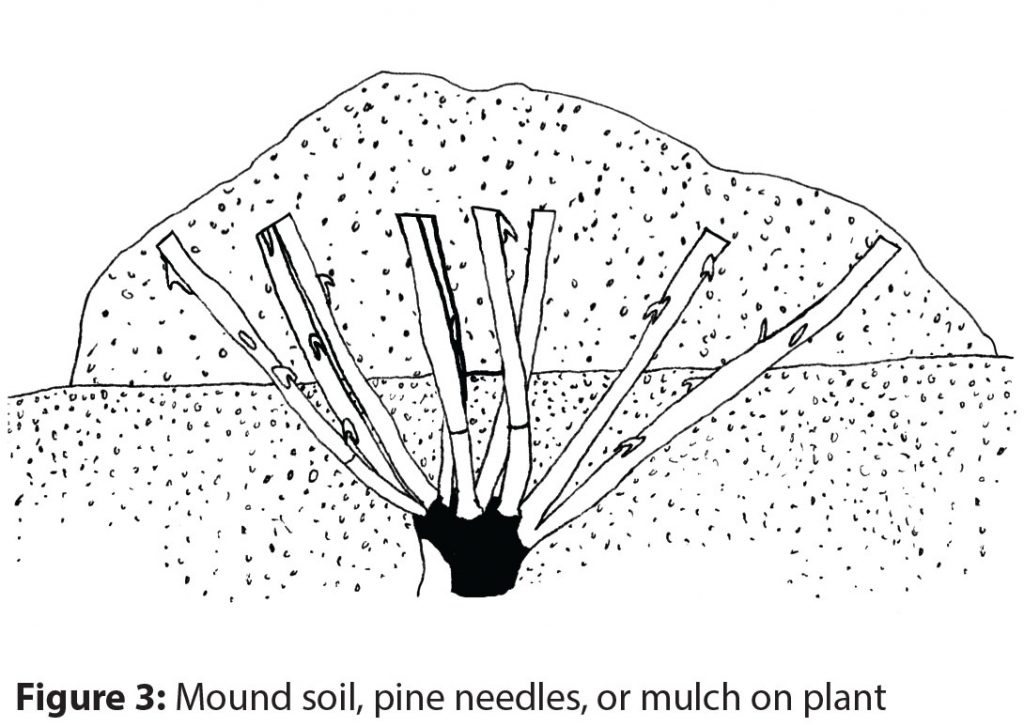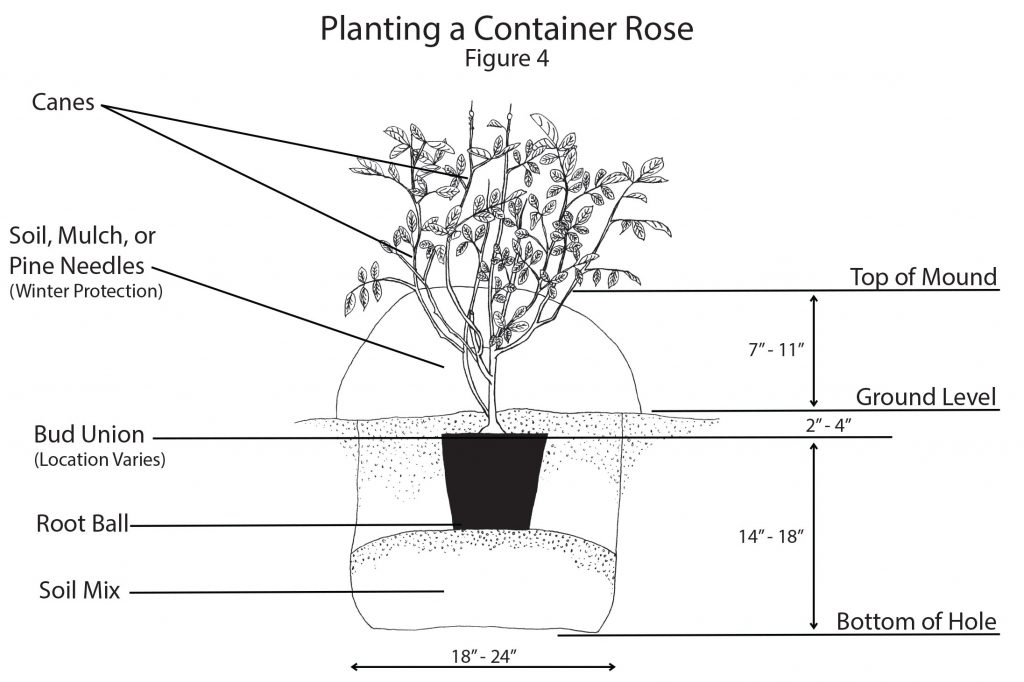Planting Roses
Selecting Plants
We do a quality and health check before shipment but always ask that you also check for your peace of mind.
Site Selection
Site selection is important. The best site would be an area that gets full sun with good air circulation. In windy sites, protect the roses from the prevailing wind.
Locate the plants so they receive a minimum of five to six hours of sunshine. The early sunshine will dry dew off plants and help prevent diseases.
When choosing a location, avoid places where the roses have to compete with tree or shrub roots for water and nutrients. Good drainage is also a factor in site selection.
Planting Bare Root Roses
For bare root roses, spring planting is preferred over fall.
Prepare rose beds or planting holes prior to receiving the roses. If bare root and packaged plants appear dry when they are received, soak them in a bucket of water overnight. Do not leave them in water for more than 12 hours.
If planting in a previously prepared bed, dig the hole so it accommodates the root system, usually about 18-24 inches in diameter and 14-18 inches deep. If the roses are planted in soil that has not been prepared in advance, dig the hole at least that large. If the soil is compacted or needs improving, the planting hole may be as large as 36 inches in diameter and 18 inches deep (See Figure 1).

If the subsoil in the bottom of the planting hole or rose bed is heavy clay, it may be desirable to replace a portion of this subsoil with peat moss or compost. Thoroughly mix the peat moss or compost (equal in volume to no more than one-third of the kept soil) with the good soil. Never allow the plants to dry out. Roses may be kept in a bucket of water while the hole is being prepared. When the hole is ready, prepare the plant by pruning any damaged or broken roots. Excessively long roots may be shortened, but leave 8 to 10 inches of healthy root if possible. Support the plant by placing it on a small mound of amended soil, spreading the roots out into the planting hole. Budded roses need to be planted so that the bud union is 3 to 4 inches below ground level. Own root roses need to be planted 2 inches below ground level. Do not pack the soil around the roots. Firm with your hands or let water from the hose settle the soil. It is important to water deeply at this time, but do not puddle the soil as this tends to separate the soil components.


Planting Potted Roses
Potted roses can be planted during the growing season, any time after the last frost. Harden off the rose outdoors (leaving the rose in its container) for 3-4 days prior to planting, watering it daily. If planting late in the season, the plant should have time to become well established in its new location before the first killing frost.
Prepare the planting hole much the same as for bare root roses, with the depth determined by the height of the bud union from the bottom of the container. Carefully remove the plant from the container and place it in the hole without disturbing the root ball. Make sure the bud union is planted 2-4” below ground level. Fill in around the root ball with soil. If the rose roots are pot bound, break up the root ball with your hands or gently slice the roots with a sharp knife. Not correcting circling roots can be detrimental to your rose long-term. Water newly planted roses every day for three days; then twice a week for two weeks. Then begin deep watering once a week.

Overwintering roses
Pruning and Cleaning: Trim weak or damaged stems lightly, removing any remaining leaves or debris around the base to prevent diseases during winter. Avoid heavy pruning until spring.
Soil Mounding: After the first frost, pile soil, compost, or mulch about 12–18 inches high around the base of the plant. This insulates the graft union and root system, protecting them from freezing temperatures.
Mulching: Use 6–8 inches of straw, shredded leaves, or evergreen branches on top of the soil mound for added protection against harsh winds and frost heave.
Covering: In extremely cold areas, wrap the plant in burlap, securing the covering with twine or stakes. This shields the branches from freezing winds and prevents breakage from heavy snow.
Watering Before Frost: Water your roses deeply before the ground freezes, helping keep the roots hydrated during dormancy.
Stop Fertilizing in late summer (August): Discontinue fertilizing in late summer. This prevents late-season growth, which would be vulnerable to frost damage.
Rose Collars or Cones: Use rose collars or specialized rose cones made of breathable materials for more vulnerable varieties. Make sure they allow airflow to prevent rot.
Uncover Gradually in Spring: As temperatures warm, gradually remove the protective materials to prevent shocking the plant with rapid temperature changes. Start by removing outer layers during warmer days.
